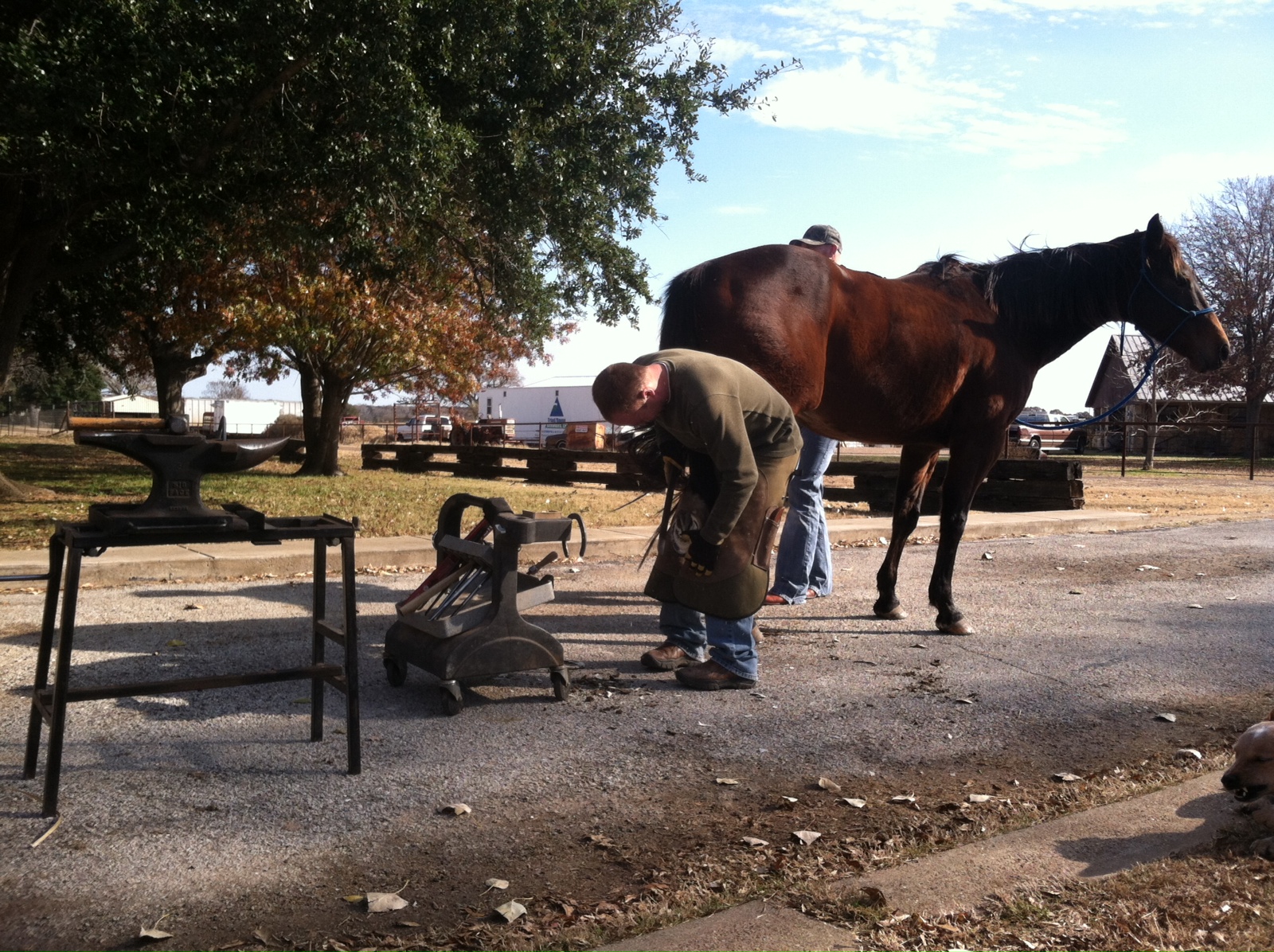HOME
A conversation with your farrier – The Natural Horseman
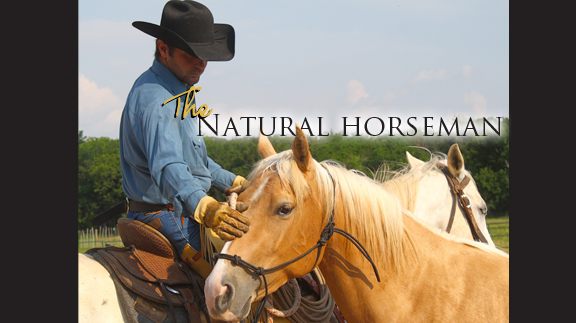
By Steve Stevens
This week I wanted to share some thoughts from one of my dear friends and one of the best dang farriers in the business. Not only is Joe Yoder good people, he is exceptional at what he does.
I actually met Joe through Benny Joe McCoy, another friend and expert farrier. Benny Joe had hauled Joe around for a long time and taught Joe a lot about the business. Joe was born of Amish heritage and moved to Texas to become a rodeo cowboy, unfortunately a bull rider. Since then, Joe has gotten smarter and has taken up team roping. Joe learned to work with horses at a young age as the Amish depend on their stock and learn to do all of their own work. His work ethic is impeccable.
Joe is like me. Short of stature and a quiet, almost shy man unless he knows you well.
He passes calmness through to the horses and I have personally seen him work with multiple scared horses that other farriers couldn’t deal with, and the horse never flinches. He is calm and takes his time with all comers. He pretty much just works around Parker County.
I can promise you Joe is worth every penny.
I have a saying that I have always stood by and that is, “You should never have a farrier get under a horse you aren’t willing to get under yourself.” If you are scared because he is dangerous, then that is not your farriers’ job. You need to get it fixed by a professional as your farrier is not paid to train horses.
I am an advocate for farriers and know how difficult their job is. Sometimes people don’t think or understand how they make their living. A farrier has to work with dozens of horses, sometimes hundreds a week for a minimum price. They spend countless miles on the road burning up the highway and have the responsibility of keeping everyone’s horses sound.
These horses lean on them, pull on them and occasionally can kick at, step on and paw them. If somebody has them get under a horse that is not safe and they get hurt, they have no way to provide for themselves and their family.
So I ask of you- next time before you have them trim “Old Roany” in the back pasture that hasn’t been caught in four years and snorts at the wind, take the time to prepare the horse. Don’t wait for your farrier to come out before you get your horse out. Pull your horse out early and exercise him for twenty, thirty minutes and get his mind so he is not fresh for the farrier.
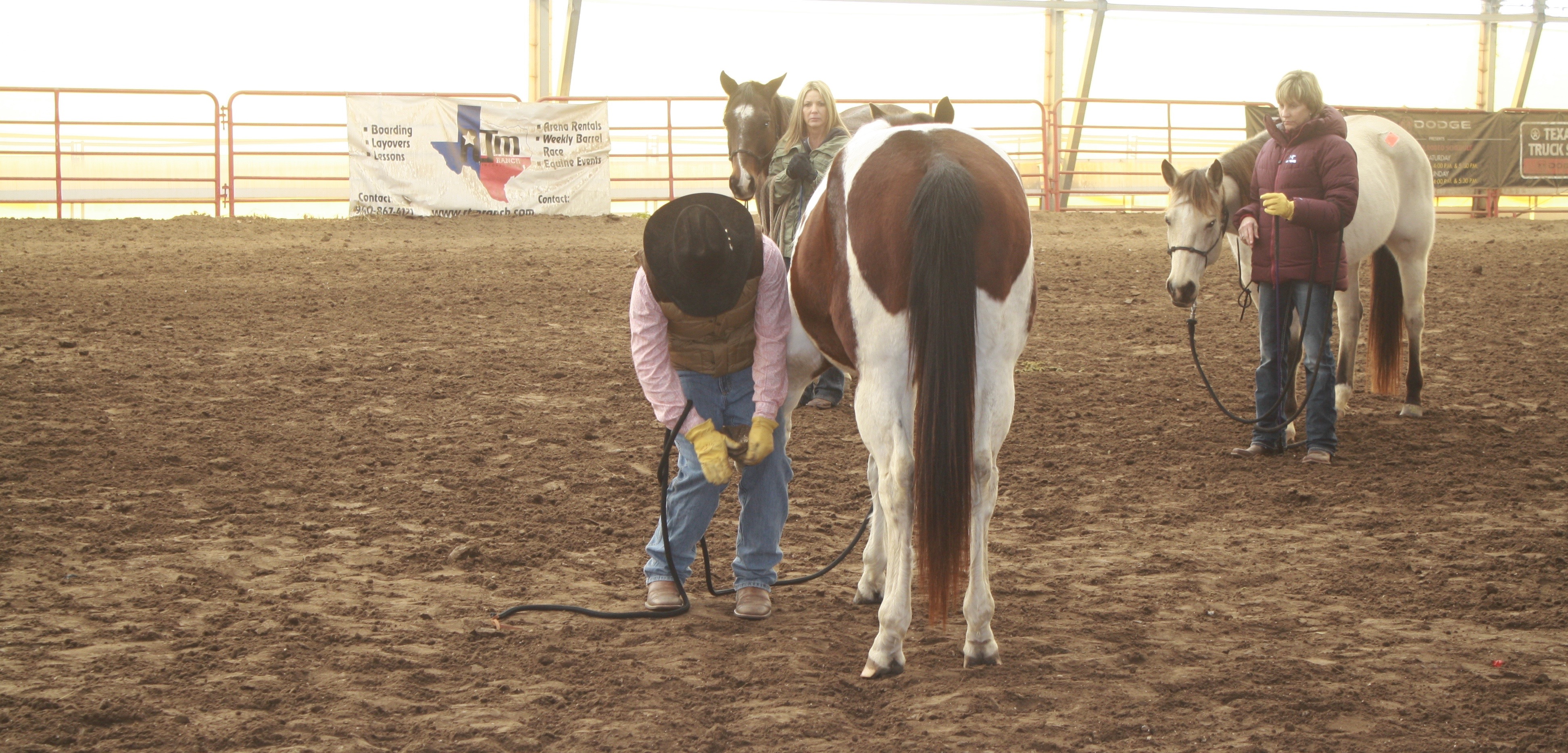
“I always believe you should be able to pick up your horse’s feet quietly before asking your farrier to do it.”- Steve Stevens (Photo courtesy of Amanda Stevens)
A FEW THINGS YOU SHOULD ALWAYS THINK ABOUT WHEN YOUR FARRIER COMES OUT (This is just my two cents)-
-You should do your best to have your horse ready and waiting.
– Like I said before, your horse should be exercised and quiet if he is fresh.
– If you have shade, offer it. If it is windy, try to get them out of the wind and if it is rainy… well, hold an umbrella. Just kidding. But trying to make a point.
– If you are real nice, offer a bottle of water. And if your horse is real difficult, a little financial tip would be a real kind gesture.
And remember, they probably have twenty more horses to do so don’t talk their head off.
I asked Joe a few questions and here are his answers:
1. What are a few things that clients don’t know you have to deal with on a daily basis?
Joe: Figuring out how to schedule a route so as not to backtrack all day and allowing enough time to arrive at your appointments on time.
2. What are a few things clients can do to help you with the process of doing a good job with their horses?
Joe: Having a nice level area to work on, clean feet and gentle horses make for a pleasant experience.
3. Have you seen much of a change in the farrier business in the last few years?
Joe: I see farriers having better horsemanship now than ten years ago.
4. What are some recommendations the owner can do to keep their horses’ feet healthy?
Joe: A healthy diet, feeding a hoof supplement. Not having horses overweight and keeping horses on a regular schedule does wonders for the foot.
If you would like to contact Joe, here is his information:
Joe Yoder is out of Boyd, Texas and works in Parker County and surrounding areas.
Phone Number: (817) 701-8083
Also, here is Benny Joe McCoy’s info. He covers most of North Texas.
Real McCoy Professional Farrier Services
Benny Joe McCoy
[email protected]
C: 214.662.6136
http://www.ishoeforyou.com
HOME
Farm and Ranch Injuries
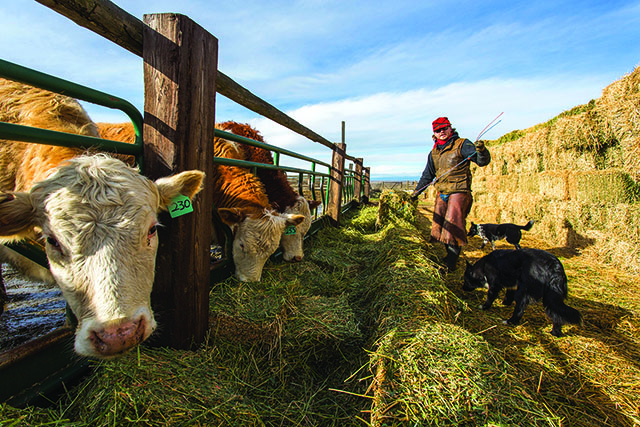
By Barry Whitworth, DVM
In January, I attended the Oklahoma Veterinary Conference. While waiting for one of the sessions to start, a classmate of mine commented how many of the attendees walk with a limp, used a cane, and/or have damaged hands. We all agreed that working with animals is hard on the body. In general, anything associated with farming and ranching is dangerous.
Most farmers and ranchers know that agriculture is a dangerous occupation. According to United States Bureau of Statistics, workers involved in agriculture, forestry, and fishing had the highest occupational fatality rate in 2022. The fatality rate of 23.5 per 100,000 full-time equivalent (FTE) workers for this group is much higher when compared to the overall occupation fatality rate of 3.7 per 100,000 FTE. Most of the agriculture-related fatalities are associated with transportation, such as tractor overturns, and vehicle crashes, but a fair number involve livestock.
To read more, pick up a copy of the March issue of NTFR magazine. To subscribe by mail, call 940-872-5922.
HOME
Jesses Jewelz

By Jesse Kader
Comfy and keep it western. That’s the name of the game this month. It’s hot and who wants clingy clothing? This jumpsuit is perfectly comfortable and relaxed without forfeiting the fashion. Dress it up or keep it casual. See this and more at www.jessesjewelz.com.
HOME
Noble Research Institute Expands New Program Offering Farmers and Ranchers the Essentials of Regenerative Ranch Management
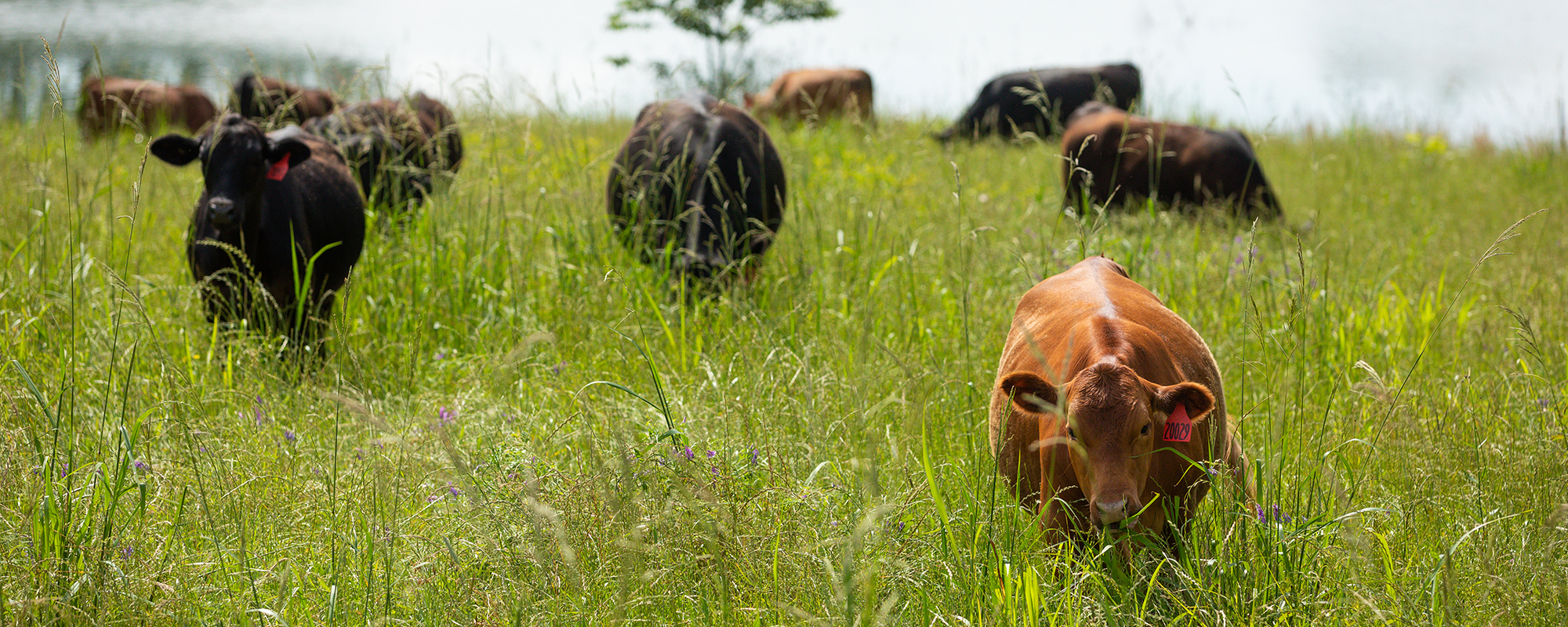
The educational program has been expanded to three new locations, empowering ranchers and farmers to monitor and improve the health of their land, livestock and livelihood through regenerative principles.
ARDMORE, OK–September 12, 2023 – Noble Research Institute announced the expansion of Essentials of Regenerative Ranching, a new educational program designed to help ranchers enhance and restore the land, making it more resilient and reaching livestock grazing goals through regenerative management. Essentials of Regenerative Ranching provides producers with practical tools, hands-on experience and guidance to make data-driven decisions to decrease costs and improve profit.
The Essentials of Regenerative Ranching course has been expanded to three new locations in Texas and Oklahoma. Registration is open now at www.noble.org/essentials. Seating is limited, so early registration is recommended.
Texas A&M
College Station, Texas
October 17 – 18
O.D. Butler, Jr. Animal Science Complex
Noble Research Institute
Ardmore, Oklahoma
October 31 – November 1
Pavilion Center
Texas A&M
Kingsville, Texas
November 7-8
Caesar Kleberg Wildlife Center
“Program participants gain working knowledge and experience of monitoring and improving the health of their soil, grazing livestock more strategically and making informed financial decisions,” said Hugh Aljoe, Noble Research Institute’s director of ranches, outreach and partnerships. “We use a mix of classroom and field work to send producers home with the tools they need to begin making changes on their ranch.”
Farmers and ranchers navigate uncertainty from weather, fluctuating market prices and escalating costs of inputs. Many producers are seeking new tools that offer greater control and reduce their operational uncertainty. Through this course, ranchers and farmers will calculate their financial situations, determine initial stocking rates, carrying capacity and grazing goals.
“The course is well-suited for ranchers of all experience levels and all types and sizes of operations,” Aljoe added. “No matter your situation, this program will transform the way you think about your ranch.”
The Essentials of Regenerative Ranching program allows producers to overcome obstacles, become more informed problem-solvers and increase the productivity of their grazing lands. By participating in this program, ranchers join a community of like-minded producers who are shaping the future of ranching and leaving a lasting impact on their land and families. “If I had known what I learned in this course when I started my regenerative journey, I could have avoided some key mistakes,” said Tana McCarter, a rancher, and Essentials attendee. “I left with the tools I needed to monitor my soil health and financial progress. I’ll now have the right data to make informed decisions on how to meet my regenerative goals.”
Noble Research Institute is an independent nonprofit agricultural research organization dedicated to guiding farmers and ranchers in applying regenerative principles that yield healthier soil, more productive grazing land, and business success.
At Noble, researchers, facilitators and ranch staff work together to share with farmers and ranchers the skills and tools to regenerate the land in a profitable manner. Noble is focused on the regenerative management of the nation’s grazing acres, which directly impacts pasture and range environments, wildlife, pecan production, and livestock production. Regenerative management recognizes that each decision made on the ranch impacts the interactions of the soil, plants, water, animals, economics and people. Noble’s 14,000 acres of working ranch lands provide a living laboratory on which to demonstrate and practice regenerative principles and ideas to deliver value to farmers and ranchers across the U.S.
-

 Country Lifestyles1 year ago
Country Lifestyles1 year agoScott & Stacey Schumacher: A Growth Mindset
-

 Equine7 months ago
Equine7 months agoThe Will to Win
-

 Country Lifestyles7 years ago
Country Lifestyles7 years agoStyle Your Profile – What your style cowboy hat says about you and new trends in 2017
-

 Country Lifestyles4 years ago
Country Lifestyles4 years agoAmber Crawford, Breakaway Roper
-

 HOME7 years ago
HOME7 years agoGrazing North Texas – Wilman Lovegrass
-

 Country Lifestyles7 years ago
Country Lifestyles7 years agoDecember 2016 Profile, Rusty Riddle – The Riddle Way
-

 Country Lifestyles8 years ago
Country Lifestyles8 years agoJune 2016 Profile – The man behind the mic: Bob Tallman
-

 Outdoor9 years ago
Outdoor9 years agoButtercup or Primrose?

